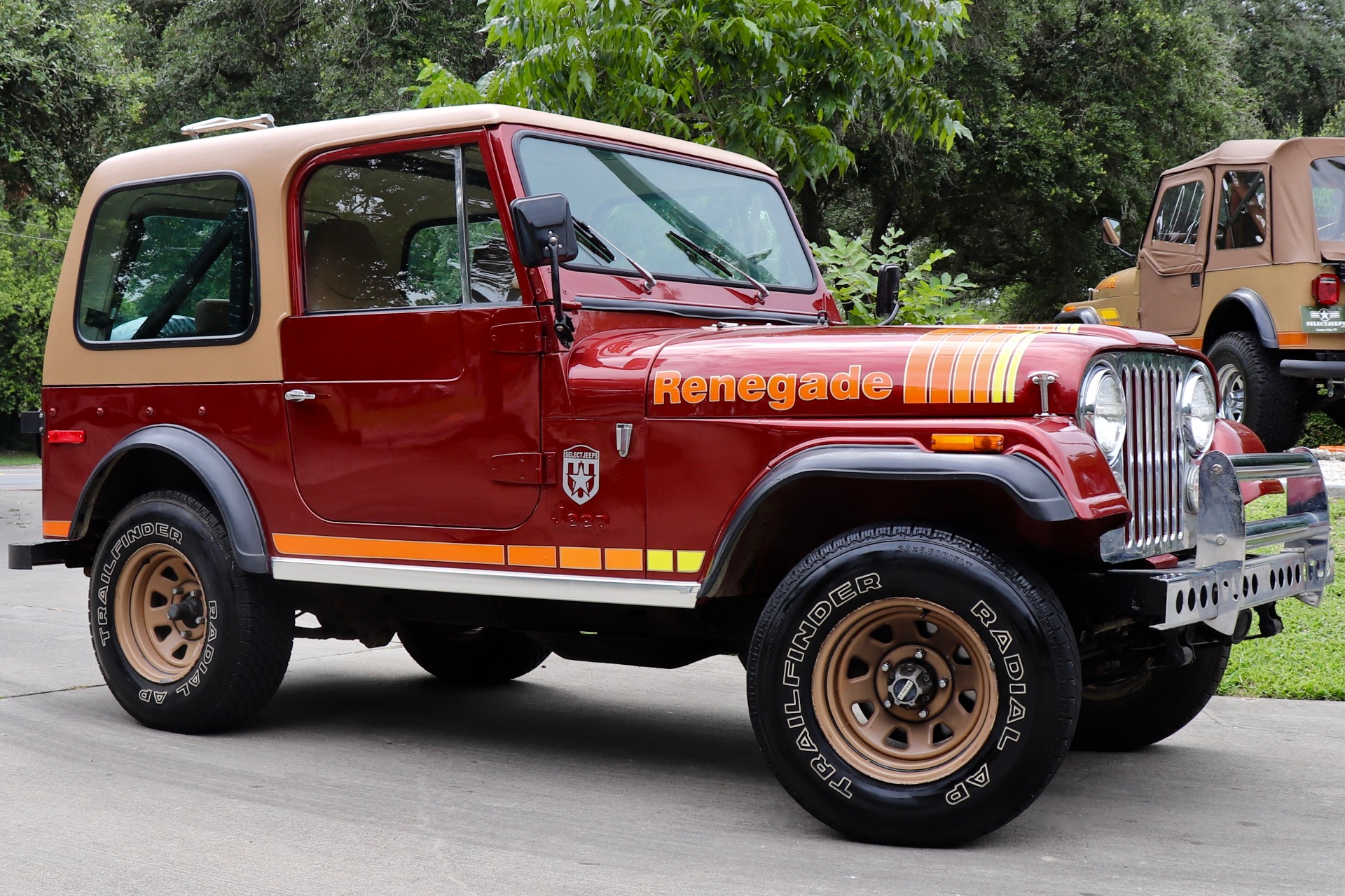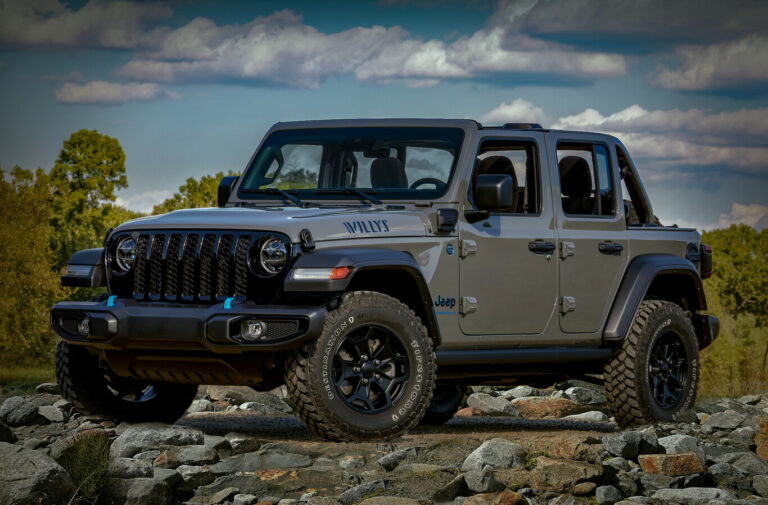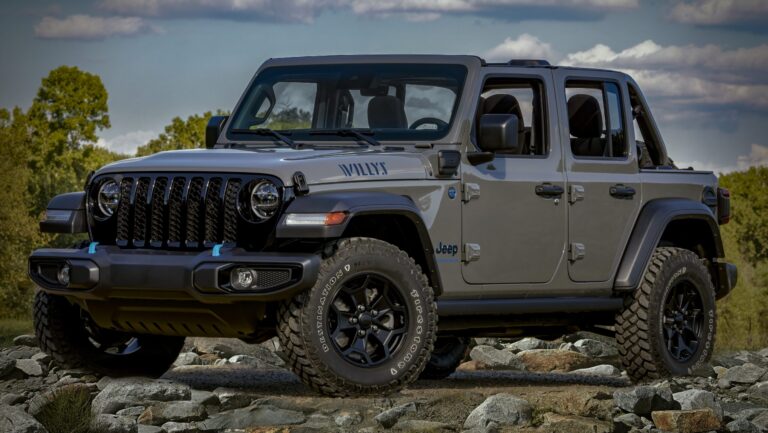1978 Jeep CJ7 For Sale: Your Comprehensive Guide to Owning an Icon
1978 Jeep CJ7 For Sale: Your Comprehensive Guide to Owning an Icon jeeps.truckstrend.com
The rumble of a classic inline-six, the unmistakable silhouette against a sunset, and the promise of open-air adventure – these are the hallmarks of the 1978 Jeep CJ7. More than just a vehicle, the CJ7 represents a golden era of American off-roading, embodying rugged simplicity, unparalleled capability, and a timeless aesthetic that continues to captivate enthusiasts decades later. For many, finding a 1978 Jeep CJ7 for sale isn’t just about acquiring transportation; it’s about investing in a piece of automotive history, a symbol of freedom, and a ticket to a vibrant community of fellow Jeep lovers. This comprehensive guide will navigate you through everything you need to know about purchasing and owning this legendary off-road machine.
Why a 1978 Jeep CJ7? The Enduring Appeal of a Legend
1978 Jeep CJ7 For Sale: Your Comprehensive Guide to Owning an Icon
The 1978 model year falls squarely within the sweet spot for many CJ enthusiasts. It represents a mature iteration of the CJ7, which was introduced in 1976 as a slightly longer, more stable evolution of the CJ5. The extra wheelbase (93.3 inches vs. CJ5’s 83.5 inches) provided a smoother ride and more interior space, making it more practical for daily use without sacrificing its legendary off-road prowess.
Key reasons for the 1978 CJ7’s lasting appeal include:
- Robust Drivetrains: Often equipped with the venerable AMC 258 cubic inch (4.2L) inline-six engine, known for its bulletproof reliability, abundant low-end torque, and ease of maintenance. The more powerful AMC 304 cubic inch (5.0L) V8 was also an option, offering a thrilling power boost.
- Solid Axles: Featuring the Dana 30 front axle and the AMC 20 rear axle, these Jeeps were built with robust, easy-to-maintain components capable of handling serious off-road abuse.
- Open-Air Experience: The removable doors, fold-down windshield, and various soft-top and bikini-top options offer an unparalleled connection to the environment, defining the classic Jeep experience.
- Simple Mechanics: Unlike modern vehicles, the 1978 CJ7 is largely mechanical, making it a joy for DIY enthusiasts to work on, modify, and maintain.
- Nostalgia and Investment: For many, it evokes a sense of nostalgia for a simpler time, while its increasing rarity and classic status make well-maintained examples a growing investment.

Key Features and Specifications of the 1978 CJ7
Understanding the specifics of the 1978 model year can help you identify a genuine and desirable example:
- Engine Options:

- 258 cu in (4.2L) I6: Standard engine, carburetors (often Carter BBD), known for torque.
- 304 cu in (5.0L) V8: Optional, more powerful, typically with a 2-barrel carburetor.
- Transmission Options:

- Manual: Borg-Warner T-150 (3-speed), later Borg-Warner T-4 or T-5 (4-speed).
- Automatic: GM Turbo-Hydramatic 400 (TH400) or Chrysler TorqueFlite 998/999.
- Transfer Case:
- Dana 20: Part-time 4WD, very durable.
- Quadra-Trac (Borg-Warner BW1339): Full-time 4WD, optional, often less preferred by hardcore off-roaders due to complexity and parts availability, but offers excellent all-weather traction.
- Axles:
- Front: Dana 30
- Rear: AMC 20 (ensure it has the one-piece axle shaft upgrade or plan for it, as original two-piece shafts can be problematic).
- Exterior: Characterized by rectangular taillights, a slightly wider stance than the CJ5, and various factory color options.
- Interior: Simple, utilitarian dash with basic gauges, often vinyl seats.
Navigating the Market: Where to Find a 1978 CJ7 For Sale
Finding the right 1978 CJ7 requires a strategic approach. Patience and persistence are key.
- Online Marketplaces:
- eBay Motors: Wide selection, often with detailed photos and seller history.
- Craigslist/Facebook Marketplace: Excellent for local finds, allowing for easier in-person inspections. Be wary of scams.
- Bring a Trailer (BaT) / Hemmings: Higher-end, often professionally restored or well-documented examples.
- Specialized Forums & Clubs: Websites like CJ-7.com forums, JeepForum.com, and local Jeep club classifieds are fantastic resources. Members often sell to other enthusiasts, leading to more transparent transactions.
- Classic Car Dealerships: Reputable dealers specializing in vintage 4x4s may have CJ7s, often at a premium but potentially with pre-inspected quality.
- Auctions: While less common for daily drivers, major automotive auctions can occasionally feature high-end, restored CJ7s.
- Word-of-Mouth: Let friends, mechanics, and local car enthusiasts know you’re looking. You might uncover a hidden gem.
What to Look For: Critical Inspection Points Before You Buy
A thorough inspection is paramount when considering a 1978 Jeep CJ7. These vehicles are nearly 50 years old, and condition varies wildly.
- Rust (The Silent Killer): This is the number one enemy of vintage Jeeps.
- Frame: Inspect thoroughly, especially around the steering box mount, spring hangers, skid plate mounts, and all cross members. Look for patches, excessive bondo, or signs of structural weakness.
- Body: Check floorboards (especially under the pedals and seats), rocker panels, body mounts, wheel wells, and the tailgate. Rust on the body is repairable, but significant frame rust can be a deal-breaker.
- Engine & Drivetrain:
- Engine: Look for oil leaks, listen for unusual noises (knocks, taps, excessive smoke), check fluid levels and clarity. A compression test is highly recommended.
- Transmission/Transfer Case: Test all gears (including 4WD high/low). Listen for grinding, clunking, or difficulty shifting.
- Axles: Check for leaks around differentials and axle seals. Listen for excessive whine or clunking during turns.
- Suspension & Steering:
- Suspension: Inspect leaf springs for sag or broken leaves. Check shocks for leaks. Look for worn bushings.
- Steering: Check for excessive play in the steering wheel. Inspect the steering box, tie rods, drag link, and ball joints for looseness.
- Electrical System: Ensure all lights, gauges, wipers, and heater work. Check for hacked or corroded wiring, a common issue in older vehicles.
- Brakes: Test pedal feel (should be firm, not spongy). Check for even braking, and inspect lines, calipers/wheel cylinders, and master cylinder for leaks.
- Modifications: Many CJ7s are modified. Assess the quality of aftermarket lifts, engine swaps, or other custom work. Poorly executed modifications can lead to safety or reliability issues.
- Documentation: A clean title is non-negotiable. Service records, original manuals, or a detailed history of ownership can add significant value.
Understanding Condition Categories and Their Impact on Price
The price of a 1978 Jeep CJ7 for sale is heavily dependent on its condition, originality, and modifications. Here’s a general breakdown:
- Project/Parts Vehicle: Non-running, significant rust, major mechanical issues. These are for experienced restorers or those seeking parts. Expect to invest heavily.
- Driver Quality: Runs and drives, but has cosmetic flaws, some rust, and likely needs various mechanical repairs/upgrades to be reliable. Good starting point for a rolling restoration.
- Good Driver/Solid Original: Minimal rust, runs well, mostly original or well-executed minor modifications. Can be driven regularly with confidence.
- Restored/Show Quality: Near-flawless, often professional restoration to original specifications or a high-quality restomod. These command premium prices.
The Buying Process: Tips for a Successful Purchase
- Set a Realistic Budget: Beyond the purchase price, factor in transportation, immediate maintenance, potential repairs, and any desired upgrades.
- Do Your Homework: Research common issues, typical values for different conditions, and parts availability. Join online forums and ask questions.
- Ask Detailed Questions: Don’t hesitate to ask the seller for specific photos, videos, and detailed information about the vehicle’s history, maintenance, and any known issues.
- Pre-Purchase Inspection (PPI): This is non-negotiable. If you’re not an expert, hire a reputable mechanic specializing in vintage Jeeps or 4x4s to perform a thorough inspection. It’s money well spent.
- Negotiate Respectfully: Be prepared to walk away if the price isn’t right or if the vehicle has too many red flags.
- Verify Title and VIN: Ensure the VIN on the title matches the vehicle and that the title is clean and transferable.
- Consider Transportation: If buying remotely, factor in the cost and logistics of shipping the vehicle.
Ownership Considerations: Beyond the Purchase Price
Owning a 1978 CJ7 is a rewarding experience, but it comes with unique considerations:
- Maintenance: While simple, older vehicles require consistent attention. Regular fluid changes, greasing, and checking for worn components are crucial.
- Parts Availability: Generally excellent, especially for mechanical components and aftermarket upgrades. Some specific original trim pieces can be harder to source.
- Fuel Economy: Don’t expect much. These vehicles were not designed for efficiency, typically yielding 10-15 MPG.
- Safety: They lack modern safety features like airbags, ABS, or crumple zones. Drive defensively.
- Insurance: Consider classic car insurance, which can often be more affordable than standard policies, especially if it’s not a daily driver.
- The "Jeep Wave": Prepare to become part of a unique culture where fellow Jeep owners acknowledge each other on the road.
1978 Jeep CJ7 For Sale: Estimated Price Guide
Please note: Prices for classic vehicles are highly subjective and can vary significantly based on location, originality, engine type, specific modifications, seller motivation, and current market demand. This table provides a general range.
| Condition Category | Engine Type | Transmission | Drivetrain | Notable Features/Mods | Estimated Price Range (USD) |
|---|---|---|---|---|---|
| Project/Parts | Any | Any | 2WD/4WD | Significant rust, non-running, major mechanical issues | $5,000 – $10,000 |
| Driver Quality | 258 I6 | Manual | 4WD | Visible rust, minor dents/scratches, needs mechanical work | $12,000 – $25,000 |
| Good Driver | 258 I6 or 304 V8 | Manual/Auto | 4WD | Solid body, minimal rust, runs strong, may have mild mods | $25,000 – $40,000 |
| Excellent Driver | 258 I6 or 304 V8 | Manual/Auto | 4WD | Very clean, well-maintained, mostly original, reliable | $40,000 – $55,000 |
| Restored/Show Quality | Original or Upgraded | Original or Upgraded | 4WD | Flawless paint, interior, frame-off restoration, rare options | $55,000 – $80,000+ |
Disclaimer: These are rough estimates. A highly customized or uniquely optioned CJ7 in any category could fall outside these ranges. Always verify condition independently.
Frequently Asked Questions (FAQ) about the 1978 Jeep CJ7
Q1: Is a 1978 CJ7 a good daily driver?
A1: While possible, it’s generally not recommended for primary daily commuting in modern traffic. They lack modern safety features, comfort, and fuel efficiency. They excel as weekend cruisers, off-roaders, or secondary vehicles.
Q2: Are parts readily available for a 1978 CJ7?
A2: Yes, for most mechanical components, body panels, and aftermarket accessories. The CJ community is large, and many suppliers specialize in vintage Jeep parts. Some original interior or trim pieces can be harder to find.
Q3: What’s the best engine for a 1978 CJ7?
A3: The 258 I6 is highly regarded for its reliability, excellent low-end torque for off-roading, and ease of maintenance. The 304 V8 offers more horsepower for highway driving but consumes more fuel. It largely depends on your priorities.
Q4: What’s the biggest common issue with these Jeeps?
A4: Rust, particularly in the frame and floorboards. Always perform a thorough inspection for rust before purchase.
Q5: Can I lift a 1978 CJ7?
A5: Yes, lifting CJs is very common for increased ground clearance and larger tires. However, be aware that significant lifts can impact ride quality, handling, and require additional modifications (e.g., driveshafts, steering components) to be safe and effective.
Q6: How much does insurance cost for a classic CJ7?
A6: It varies, but many owners opt for classic car insurance, which can be surprisingly affordable, especially if the vehicle is not a daily driver and has limited annual mileage.
Q7: What’s the fuel economy like?
A7: Poor. Expect somewhere between 10-15 miles per gallon, depending on engine, transmission, tire size, and driving style.
Conclusion
The 1978 Jeep CJ7 stands as a monument to a bygone era of rugged, no-nonsense utility and adventure. For those seeking a tangible connection to automotive history and the thrill of open-air exploration, a 1978 Jeep CJ7 for sale represents an opportunity to own an icon. While the journey to finding and maintaining the right example requires diligence, research, and a clear understanding of its unique characteristics, the reward of commanding this classic machine on the open road or challenging trail is immeasurable. With patience, a thorough inspection, and a love for the timeless appeal of the CJ7, you can soon be experiencing the legendary "Jeep thing" for yourself.



